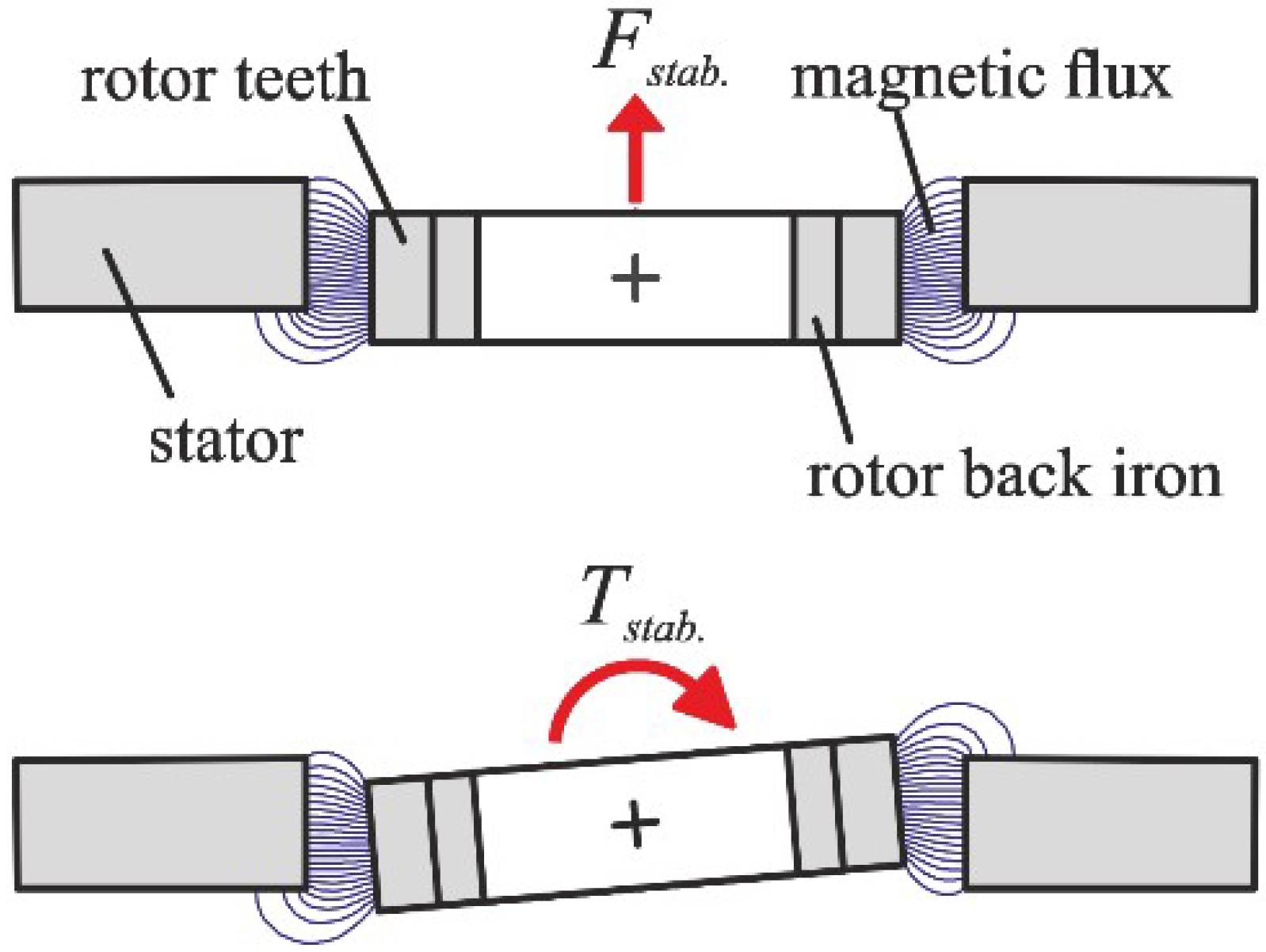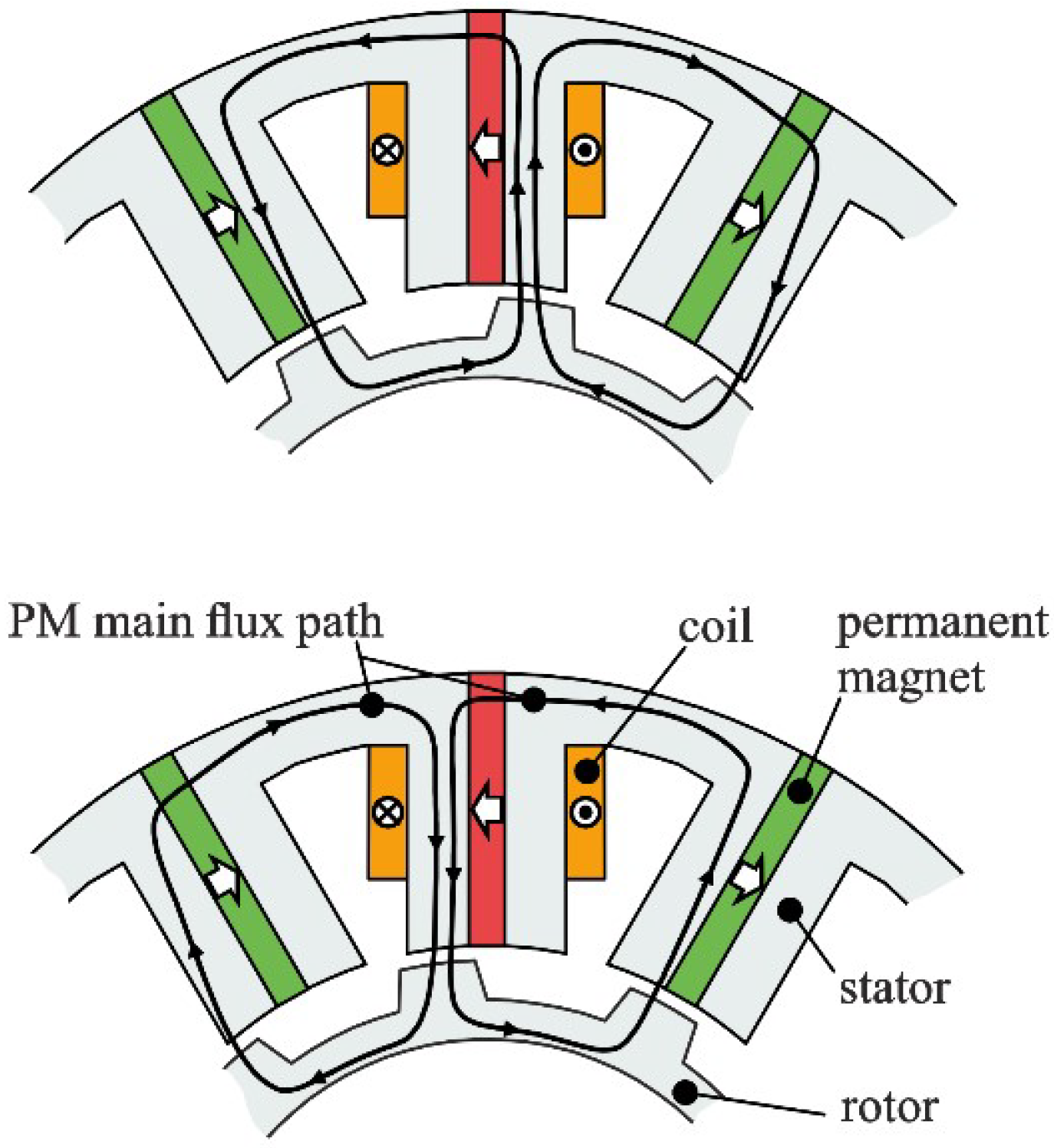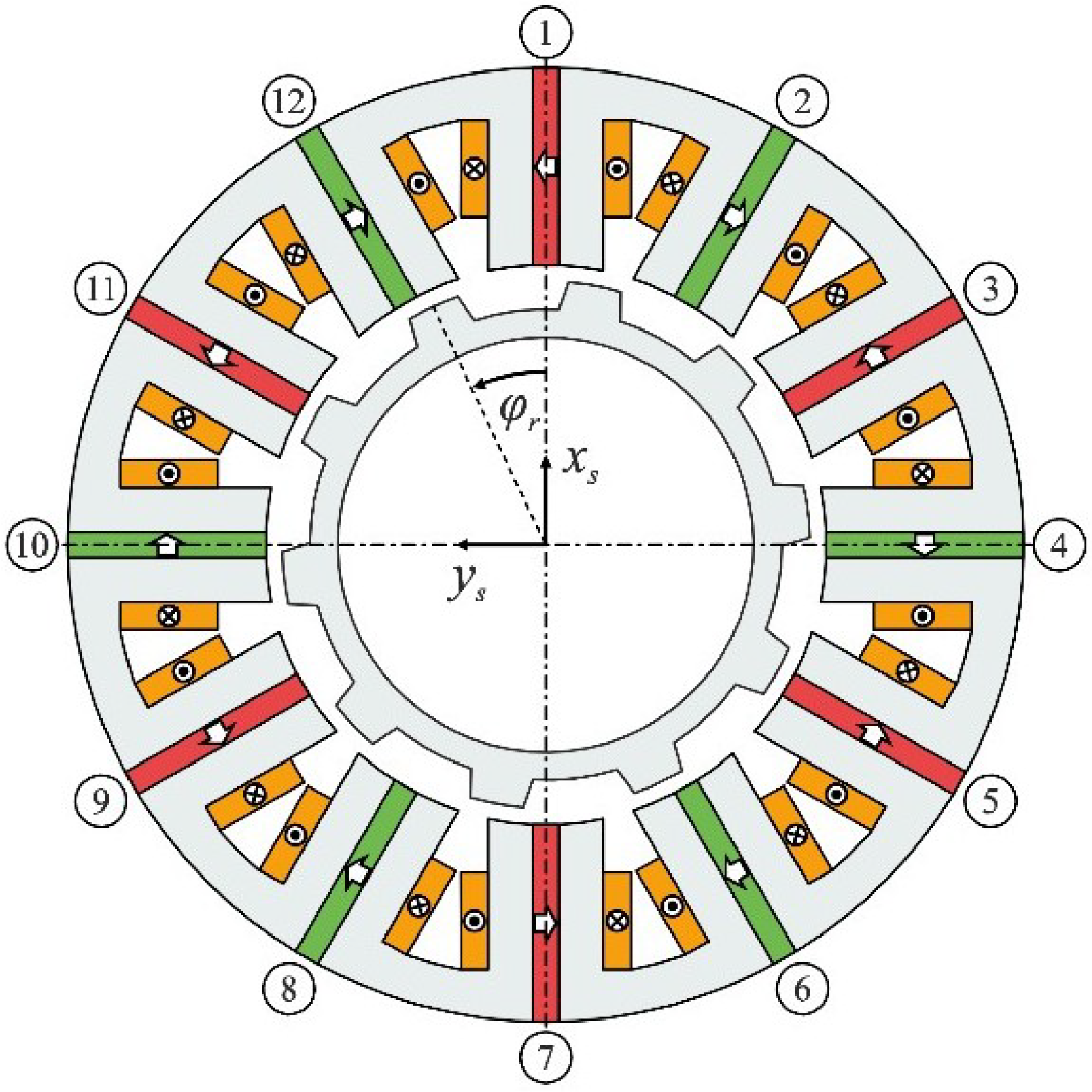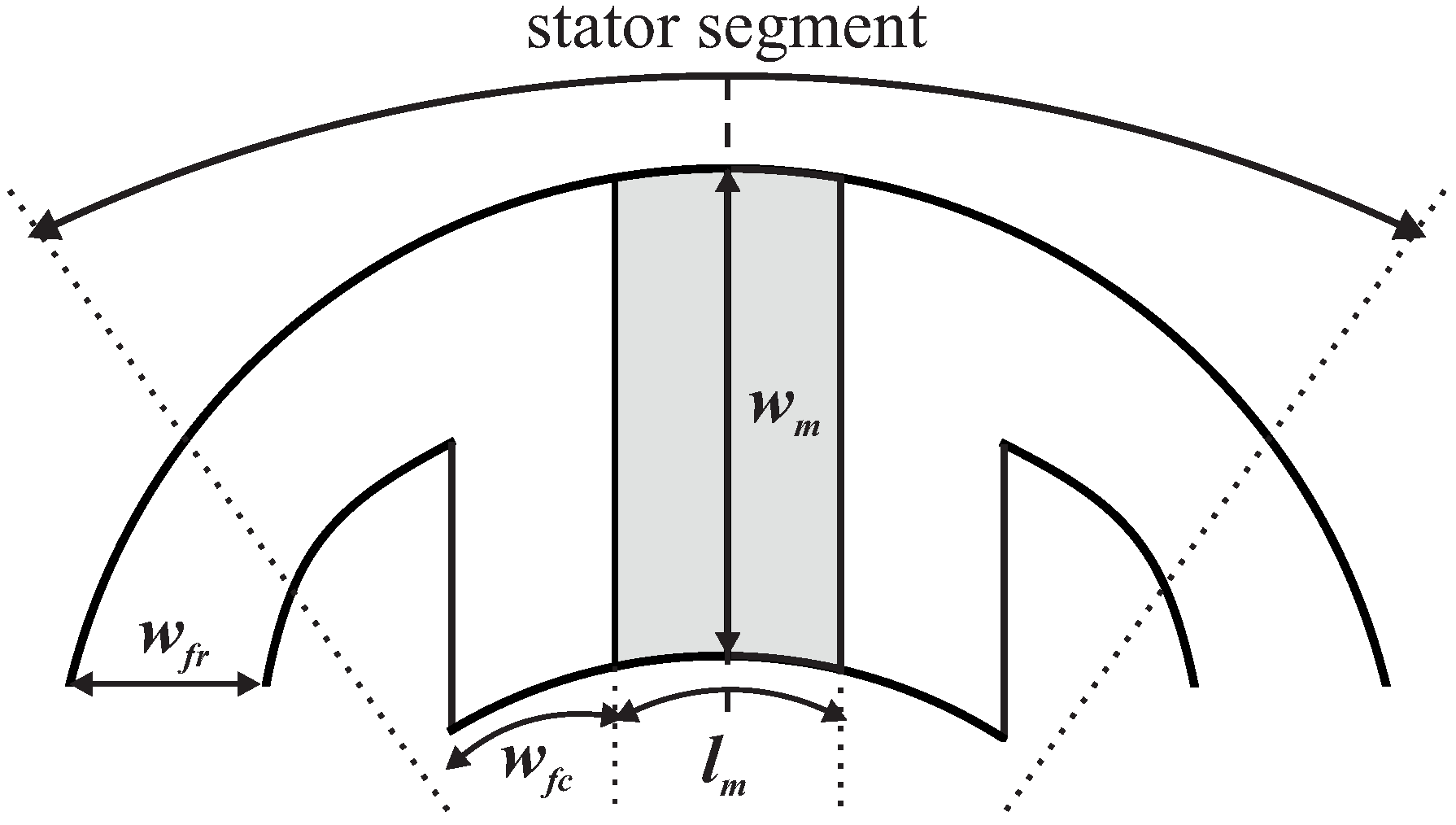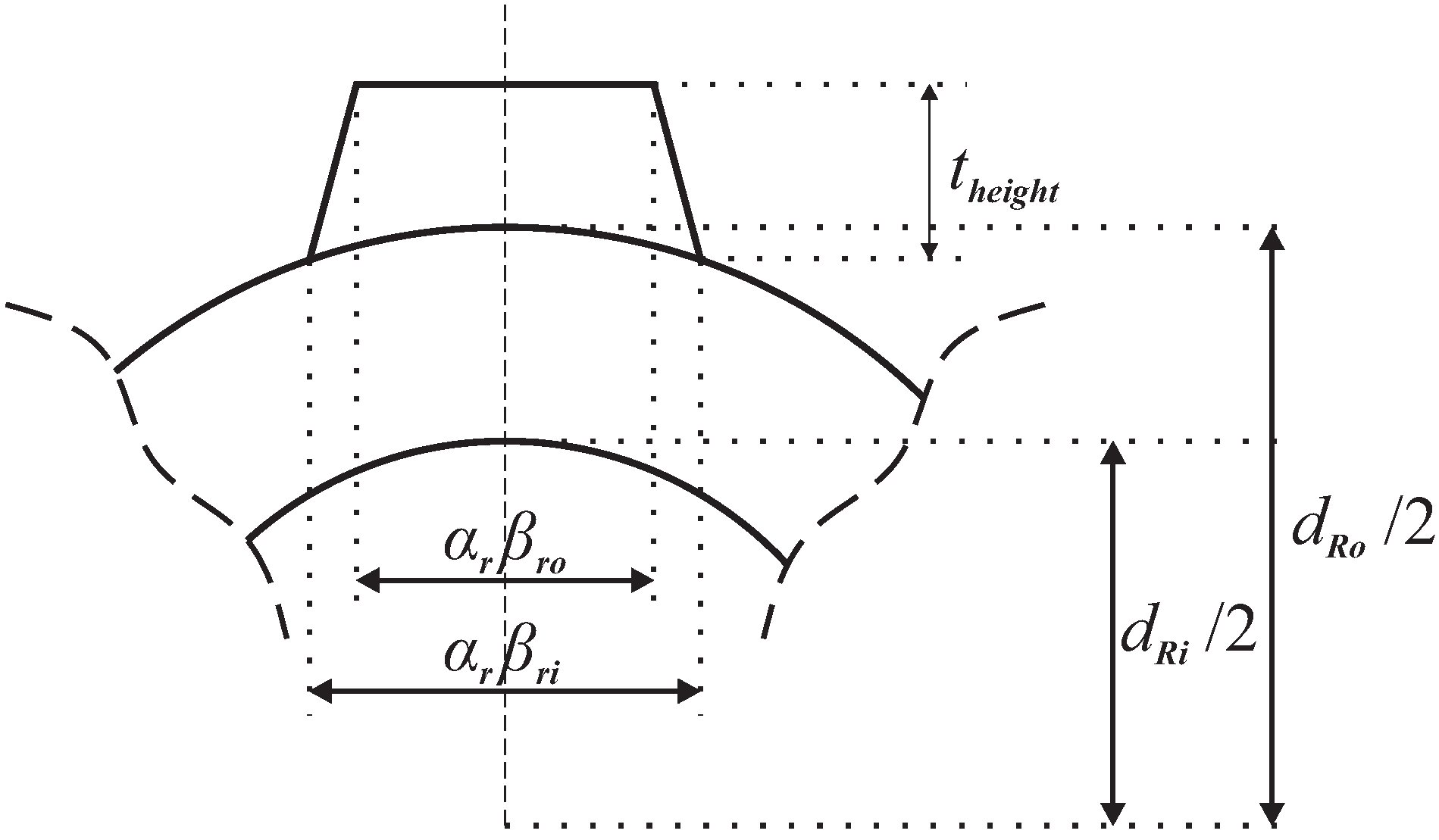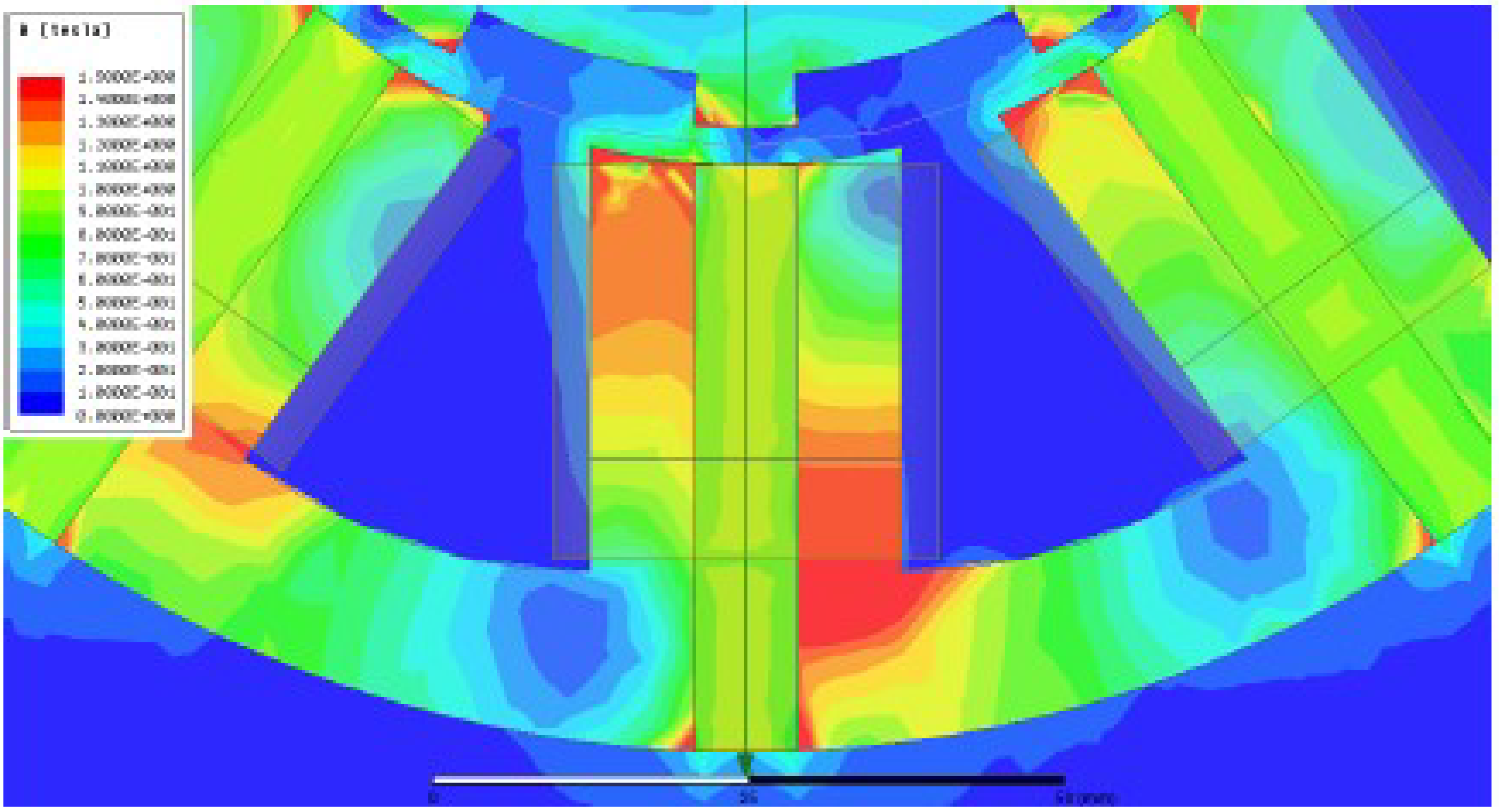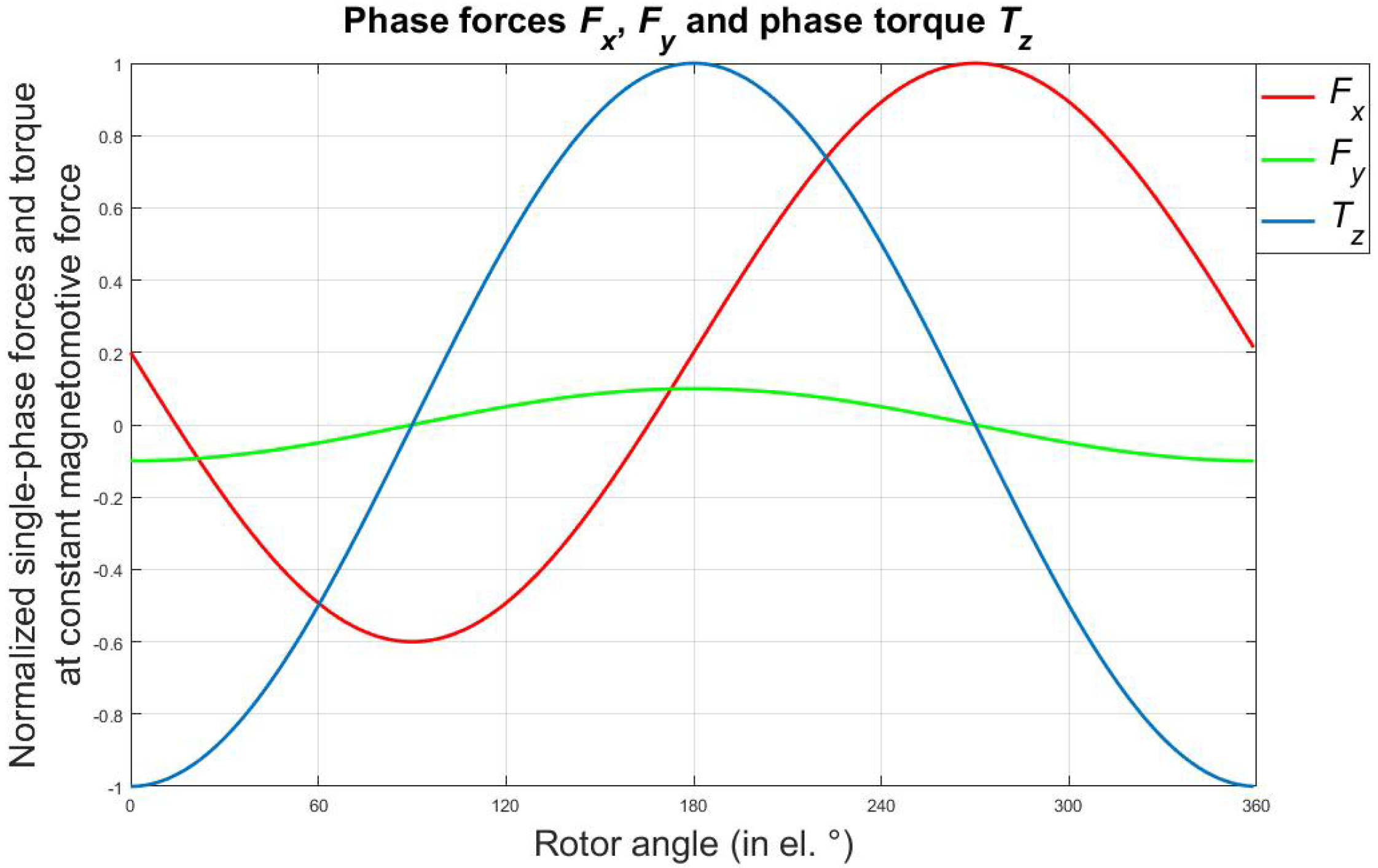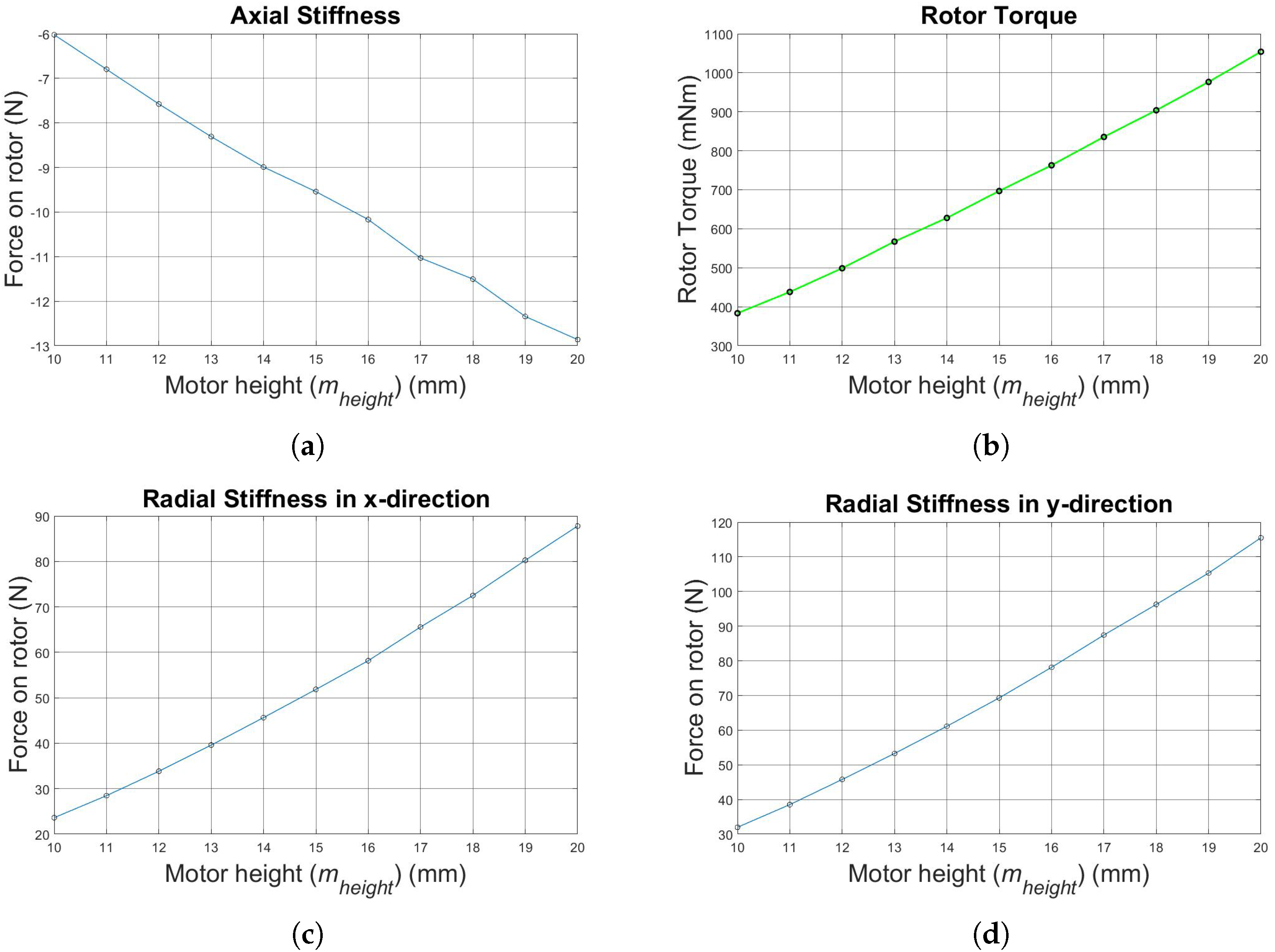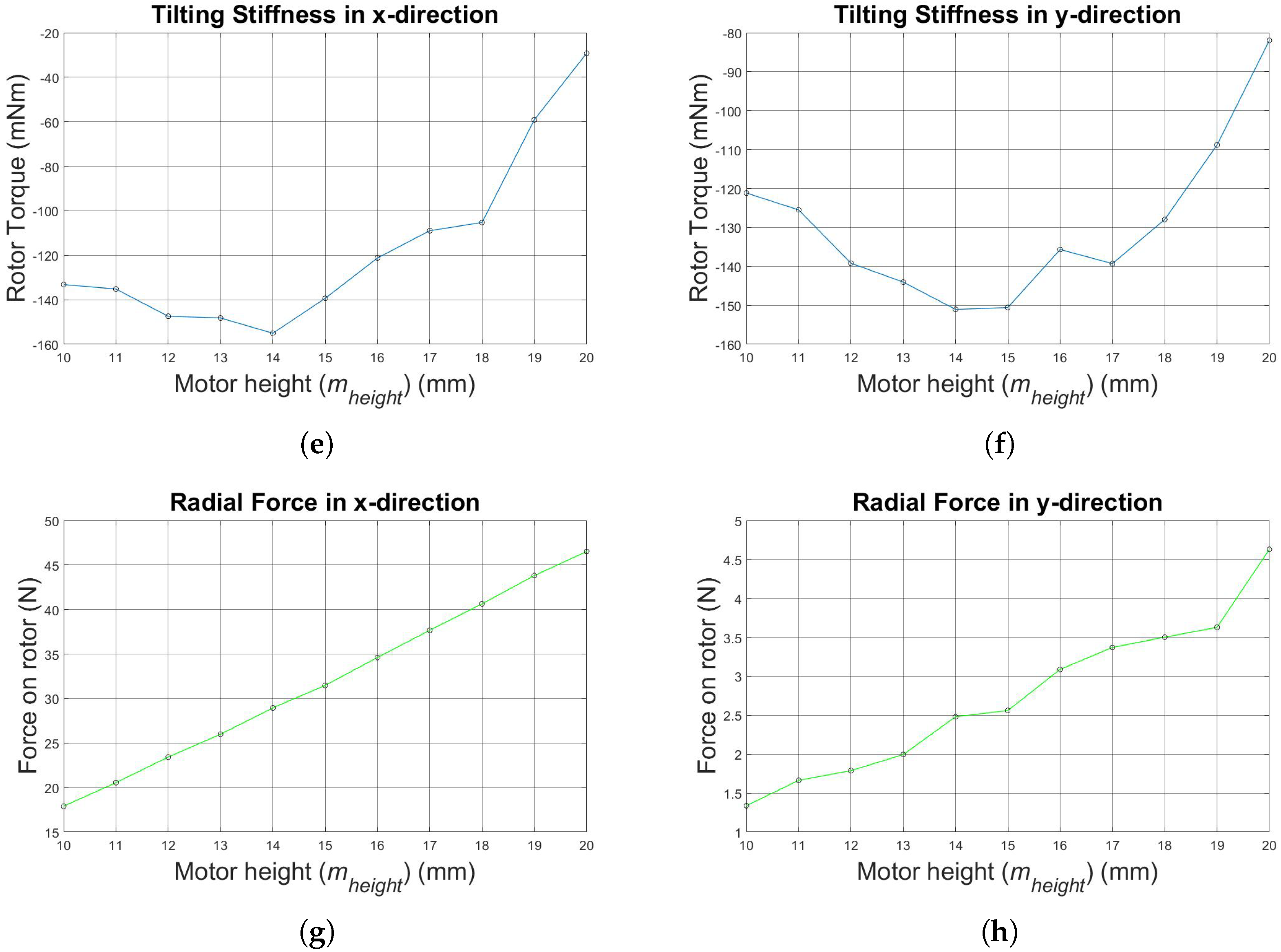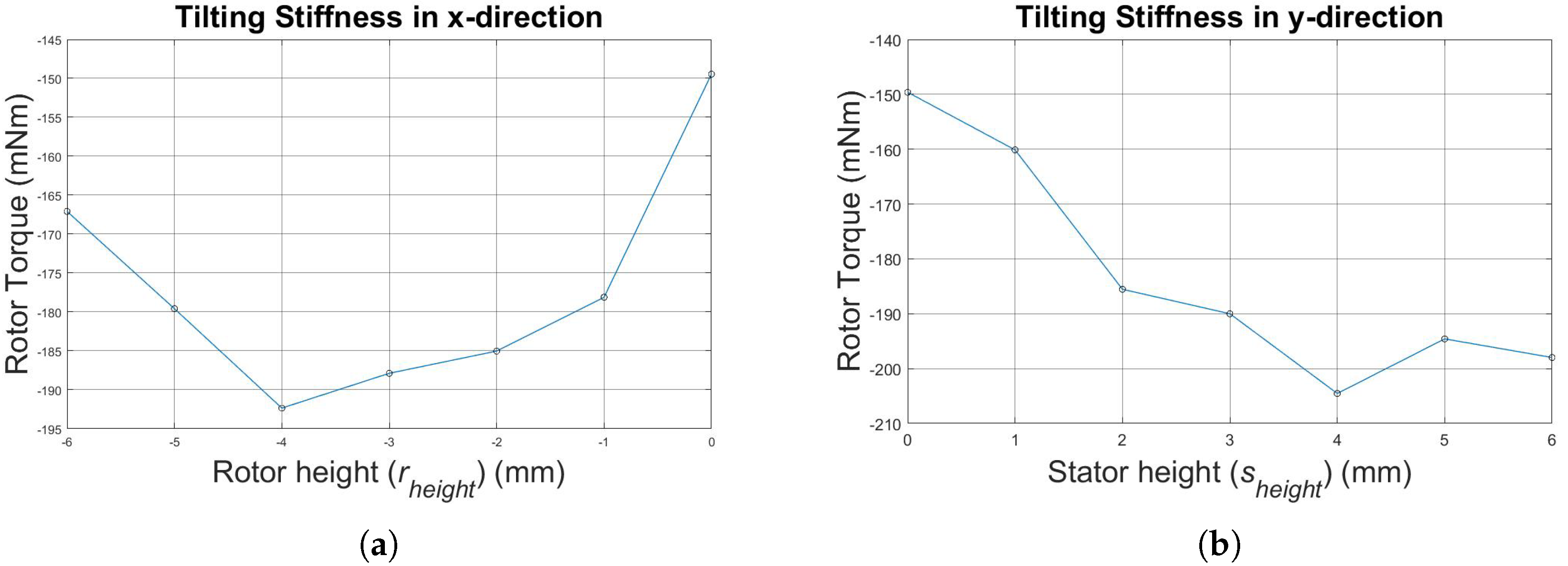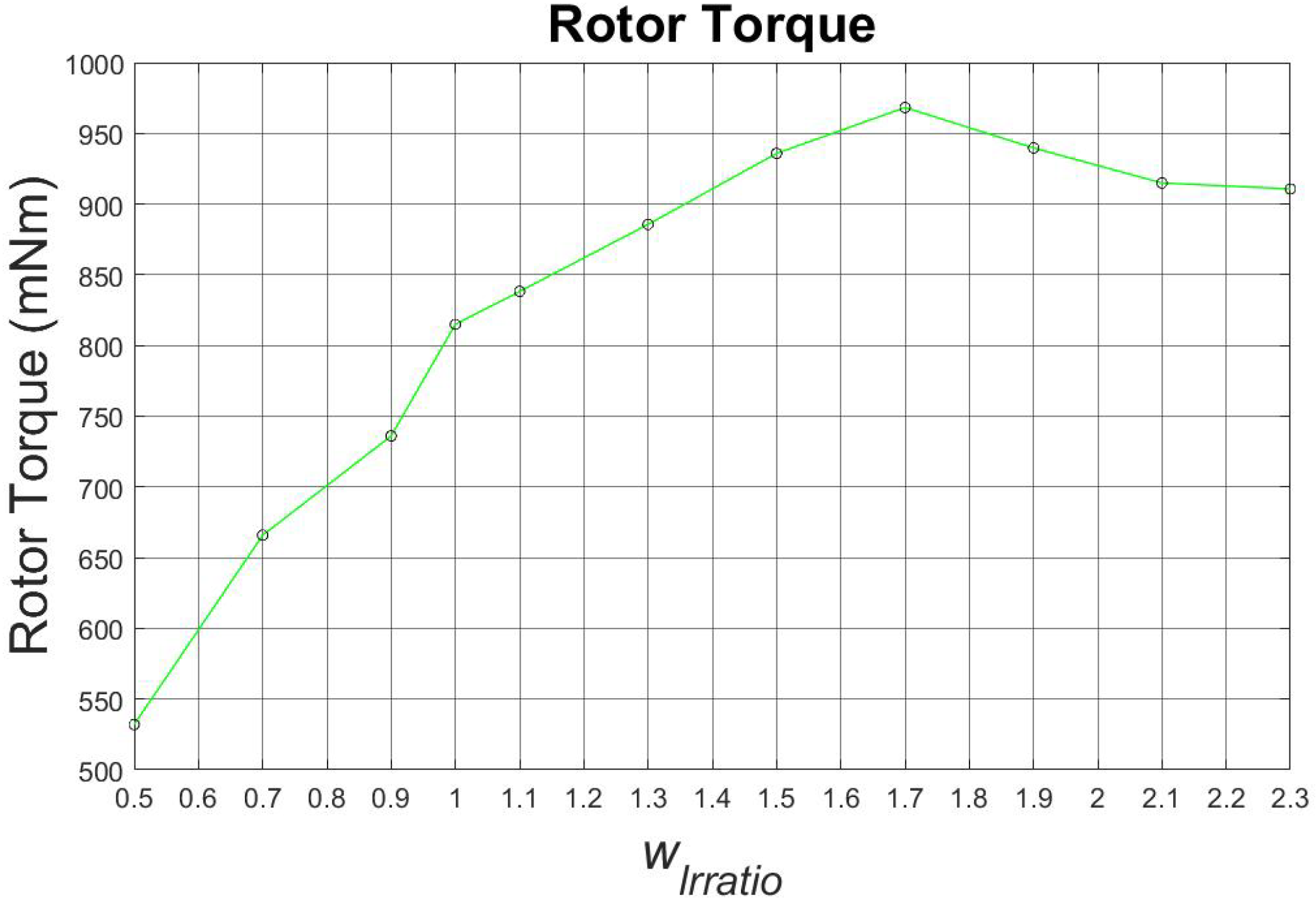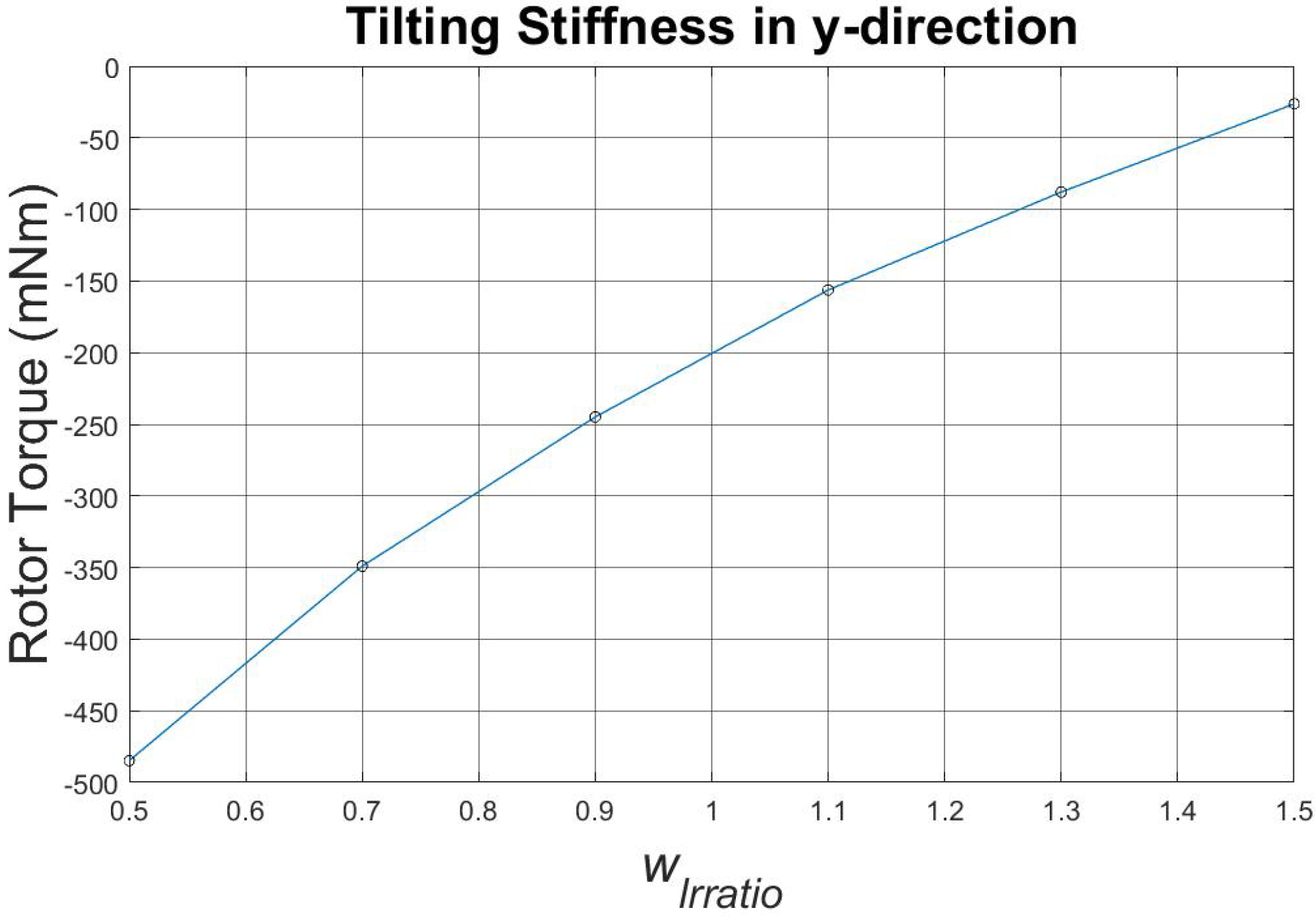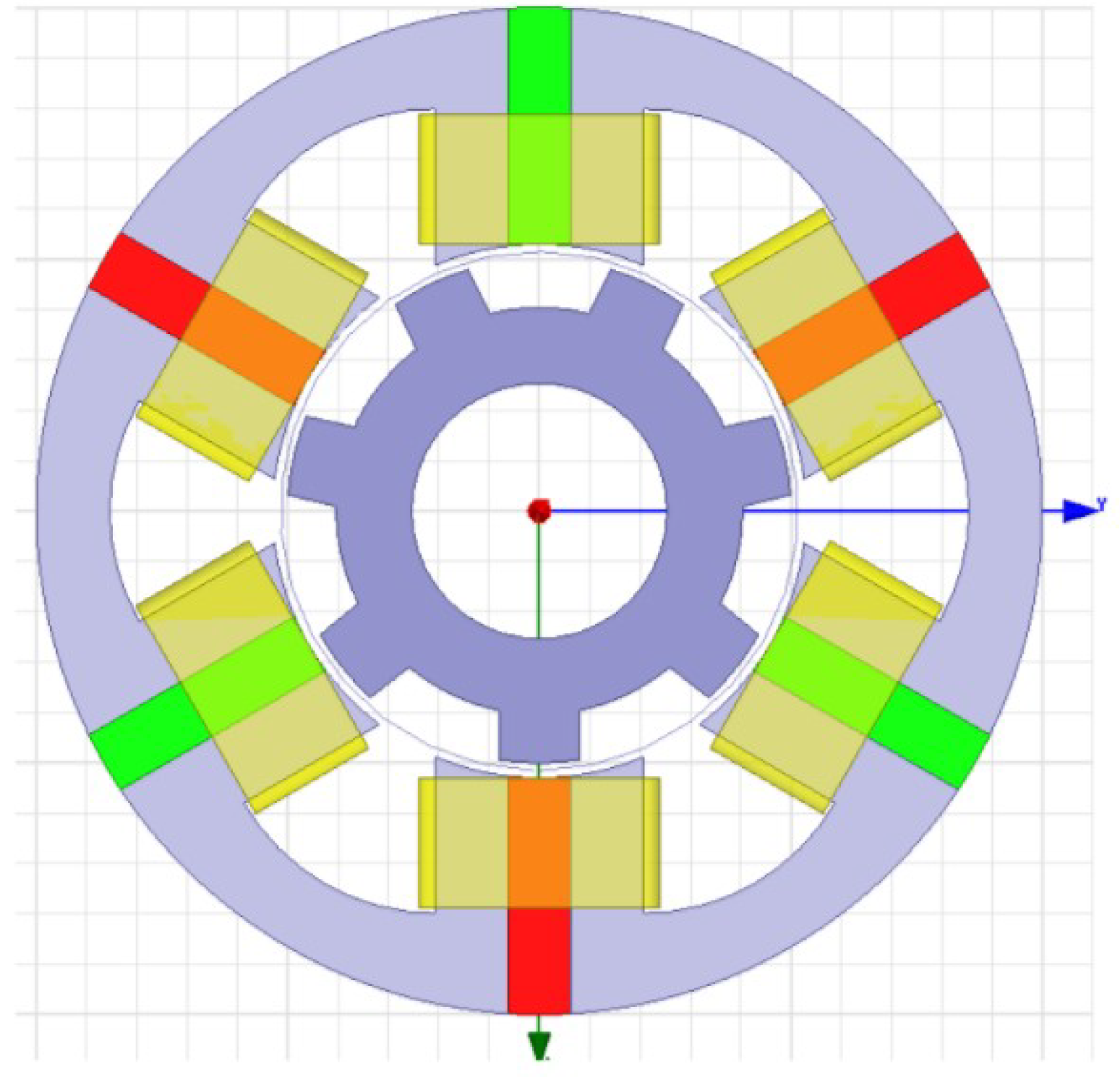The optimization process is stepwise by changing one stator or rotor parameter after the other. Thus, the optimization is divided into four steps, which are presented in this section. The variable geometry parameters are grouped as follows:
5.1. FEM Simulations and Optimization Results
- Step 1:
Motor height.
The first parameter that was optimized is the axial height of the stator and the rotor, which feature the same axial height at first. The values of the other parameters are given in
Table 2. The simulation range and step size are presented in
Table 5.
The most important results, which are shown in
Figure 8e,f, are the characteristics of the tilting stiffness values in the x- and y-direction, where higher absolute values are preferable. This leads to an increase of 14% in the x-direction and 23% in the y-direction tilting stiffness. Additionally, higher absolute values regard the axial stiffness and the active bearing forces and torque that are reached. Parameter
is set to 14 mm (instead of 10 mm).
- Step 2:
Stator and rotor height.
In the next step, different stator and rotor heights (in the z-direction) are reached. The reference simulations for the tilting stiffness are shown in
Figure 9a for decreasing rotor height and in
Figure 9b for increasing stator height.
Since the highest absolute value for the tilting stiffness is given for a constant stator height equal to 14 mm and a decreased rotor height at 10 mm (an increase of 16%) and a constant rotor height equal to 14 mm and an increased stator height at 18 mm (an increase of 37%), further comparisons and simulations are conducted regarding these two setups. The simulation results of those two setups are shown in
Table 6. The second variant with increased stator height is selected for further consideration.
- Step 3:
Stator geometry.
The circumferential length of the iron part of the stator tooth (
) is computed by parameter
given by:
where the parameter
M is defined as the circumferential length of the stator segment divided by the sum of the stator segment parameters as defined in:
The PM’s length (
) is computed by parameter
:
The space between two stator teeth is set by the parameter
. These three stator parameters
and
affect the motor performance. As mentioned before, these parameters are varied one after the other. The simulation ranges and step size are given in
Table 7.
First, the parameter
is optimized. The characteristics for rotor torque shown in
Figure 10 and tilting stiffness shown in
Figure 11 are considered.
As shown in
Figure 10, the motor torque is higher for higher values of the parameter
, while in
Figure 11, the absolute tilting stiffness is higher for lower values of the parameter. Since, for both characteristics, it is better to achieve higher absolute values, a compromise of the parameter
had to be made, which set the parameter as one.
In a second step, simulations with different parameters
and
were conducted. Since the space between the stator teeth was previously set to one by parameter
, to be able to simulate and see the differences in motor performance for the other two parameters
and
, the motor model was redefined so that parameters
and
were no longer independent of each other. Thus, the parameter
is defined as follows:
Based on
Table 8, the parameter
is defined to be 0.9. Although the motor torque and the passive stiffness do not feature their maximum, this value does not increase the cogging torque nor the cogging forces.
is then set to 1.05, calculated by Equation (
9).
- Step 4:
Rotor geometry.
After defining all the stator parameters of the FSPM properly, the drive already showed enhanced performance. Further improvement is achieved by optimizing the rotor parameters. The simulation parameters are summarized in
Table 9.
The simulation results are shown in
Table 10,
Table 11 and
Table 12 for the parameters
and
. Apart from high torque performance, cogging torque and cogging forces had an impact in defining the rotor parameters. Due to high cogging torque and cogging forces with some values of the parameters
and
, these parameters could not be selected with their highest passive stiffness, active torque and force values. Thus, parameter
was set as 1.1 instead of 1.3, while parameter
was set as 0.6 instead of 0.8. The cogging torque and cogging forces did not have an impact on choosing the parameter
. Thus, this parameter was set as 0.4 with the highest results of passive stiffness, active torque and force values. The selected parameters are shown in
Table 10,
Table 11 and
Table 12.
The main goal of the optimization was to enhance the active torque and bearing forces at the cost of radial stiffness. Additionally, increasing the stabilizing tilting stiffness in the x- and y-directions is important. The final results of the optimized FSPM motor in comparison to the unoptimized version are shown in
Table 13.
Results show an increase of 52.71% in axial stiffness
, as well as 23.75% and 14.87% in tilting stiffness
in the x-direction and
in the y-direction. The radial stiffness values
and
were increased, which is unfavorable, but they were compensated with an increase of the active bearing forces
(1000 At) and
(1000 At). A beneficial increase of 132.02% in motor torque
(1000 At) was achieved. Geometric parameters of the FSPM after the optimization with a comparison to the parameters before the optimization are presented in
Table 14. Finally, a model of the new FSPM motor is shown in
Figure 12.
